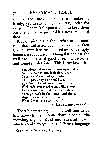TitleChapter V, "Everyman's House" book, by Caroline Bartlett Crane
CreatorCrane, Caroline Bartlett, 1858-1935, author
InstitutionWestern Michigan University
SubjectArchitecture, Domestic
SubjectDwellings
SubjectBetter Homes in America
Item NumberLA03a036
RelationPart of Caroline Bartlett Crane "Everyman's House" Collection
Type
collection, text
Formatjpeg
Description56
CHAPTER V
THE HUB OF THE HOUSE
NOTHING domestic has changed so radically in the last generation or so as the size, general aspect, and working arrangements of our kitchens. This is largely because men have capitalized, in the factory, bakery, creamery, laundry, so much of what was once the lonesome household drudgery of women. This is good for the home, good for women--provided they have a housekeeping eye out to see how the work is done. For that matter, food factories can be more sanitary--many of them are--than the average kitchen is likely to be. Also, they can be vilely, incredibly filthy. The housekeepers of any town can control these matters if they care to. (I once wrote an essay on this subject, entitled 'The Folly of ?Minding Your Own Business.''
But other things, besides the happily depleted tasks of domesticity, have shrunk and
57
THE HUB OF THE HOUSE
changed the kitchen almost beyond recognition. For example: There's the long trail a-winding from the hearth oven, past the wood stove, the coal stove, the kerosene stove, to the gas range and the electric grill. From the old oaken bucket and dishwater thrown on the grass to the sink faucet and sanitary plumbing. From ventilated 'safes' and spring houses to ice (and iceless) refrigerators. From cruel white deal floors to be kept un-spotted from the world to merciful and much better-looking linoleum. From flour, barrels, vinegar barrels, molasses barrels, sugar barrels, to the trim little packages that today take their place and a minute fraction of their room. It is, indeed, a long, long trail between the erstwhile kitchen--the scene of every house-hold operation, from Monday morning's wash to Saturday night's baths--and the kitchen of today, dedicated normally to just three uses: preparing food; cooking; clearing up after meals.
The wheels of the old family carryall didn't lose a hub when, amid the general transfiguration, they shrank in diameter and acquired grease cups and pneumatic tires.
58
EVERYMAN'S HOUSE
Likewise, the kitchen, notwithstanding all domestic metamorphoses, still remains the Hub of the House. Father still comes home to meals. As of yore, the children's first question is, 'When's dinner ready?'
Three-meals-a-day remains woman's most exacting job, which can't be bunched or differently spaced. They tie her to the stove and the clock, at the hub of the house and of the household circle. Between these fixed engagements she makes brief excursions--duty calls--upon each of the rooms, the front door, the back door, the furnace, the telephone. The daily round, we call it! Around the Hub.
This is her life that a woman is thus living--millions on millions of American women. Then isn't it supremely worth while to concentrate in the kitchen all of convenience and labour-saving invention we can lay hands on? Isn't it proper to spend money more freely here than elsewhere? Aren't wheels always greased at the hub?
A person merely peeping into our kitchen would know that it realized its dynamic importance to Everyman's House. Our kitchen is pronounced by the Michigan State
[Page NA]
Kitchen, showing dish-warming cupboard and 4-storied passway to living-dining room in relation to gas range, table, sink, etc. [photograph: LA03a019]
[Page NA: BLANK]
59
THE HUB OF THE HOUSE
Home Demonstration leader a model of compactness and convenience--and, I think she would permit me to add, of beauty. And surely the place where some woman--be it mistress or maid--spends a large share of her time ought to be made at least reasonably attractive in appearance.
The kitchen of Everyman's House, as may be seen from the floor plan, is at the rear centre of the house, and is 10' x 9'6' in size. It has doors communicating with the Mother's Room, the kitchen entry, the basement stairs, the living-dining room, and the bathroom. The last two doors are equipped with inexpensive devices for keeping them closed. They will not close to pinch small fingers; they ooze shut. In the middle of the outside wall, above the sink, is a two-sash window reaching nearly to the ceiling, to afford skylight, which is the best light. This window is so situated as to light the whole room well, especially the sink, stove, and work table. The inside and outside entry doors on the south are also glazed, to give additional light. Cross ventilation is accomplished between the window and entry door, and from the door to the cellar stairs,
60
EVERYMAN'S HOUSE
also, if desired. A wall space leading from above the range to the outside wall allows for possible special ventilation at this point.
Artificial lighting of the kitchen is accomplished, not by a central light always causing one to work in one's own shadow, but by two properly spaced ceiling lights controlled from a wall switch. The entry has a separate light. Near the kitchen window is a wall opening for connecting an iron or fan or other electrical convenience.
On either side of the sink are work counters eighteen inches in width and running across the room. In order to have the best possible service here, it was specified that these count-ers should be of clear white maple treated with hot paraffin, to make them waterproof, non-absorbent, easily cleaned, and good-looking. The housewife herself can renew this paraffin surface from time to time. At the back of the right-hand counter is a narrow shelf raised a couple of inches and boxed in below. This gives a place for various small containers--scouring soap, silver polish, etc.--which do not have to be moved every time the counter is washed. Above the sink, suspended on
61
THE HUB OF THE HOUSE
hooks, are the various things commonly needed at this point--soap dish, soap shaker, milk-bottle opener (that tops may be washed before caps are removed), sink and vegetable brushes, metal dish cloth, scissors, etc. Dish towels and dish cloths are kept in one of the drawers at the right.
At the ends of the cupboards, at right angles to the sink, are to be found a hook for a hand towel on one side, and, on the other, a narrow high shelf for alkaline substances used in cleaning. Few people seem to realize the great danger of keeping these virulent poisons within the reach of little children. They are just as dangerous as the acids from which we guard our children so carefully. Dr. Chevalier Jackson of Philadelphia, the celebrated throat specialist, declares that all such substances should be labeled[sic] 'Poison' and treated as such. He tells of many operations for stricture of the oesophagus[sic] performed on little children who have swallowed some of these substances commonly found within a child's reach in kitchen or bathroom. This shelf should be as high as the worker can well reach, and should have a rail in front
62
EVERYMAN'S HOUSE
of it, to make it difficult for a child to extricate a can or bottle, even if he manages in any way to climb up to it.
Beneath the right-hand counter, and extending to the floor, are a cupboard of shelves, a tier of three drawers, and a draw-leaf meat board. Below the left-hand counter are a shelf cupboard, a two-parted flour bin, and a pastry board. It will be seen in the next chapter that all bread and pastry are to be made on one side of the window; all other kinds of food prepared for cooking on the other side. My personal preference is for this division of function, partly because it favours the idea of a growing child helping Mother without being in her way.
Above each work counter is a two-storied cupboard, the top story with separate doors reaching to the ceiling. The sink-side doors of all the cupboards are hinged on a strip down the middle of the opening, so that no door opens over the sink or against the light.
At the farther end of the right-hand cupboard is a door opening into the metal clothes chute. In a small recess by this door stands the telephone, which can be reached from
63
THE HUB OF THE HOUSE
the living room, also, by opening the passway door. The clock can stand in a corresponding recess of the shelf above.
The east wall, opposite the sink and working counters, is taken by a deep cupboard, drawers below, enclosed shelves above. This is situated between the door to the basement stairs and the door to the Mother's Room. One shelf of this cupboard is designed for extra-tall things--that non-conforming vinegar bottle and breakfast-food carton, for example. Other shelves hold general supplies purchased in quantity, and seldom-used utensils. The pan covers are on edge in a rack attached to the inside of this door. The cook books[sic], the electric iron and the coffee percolator, besides the ground coffee, find room in this closet. The three drawers below are for whatever the individual housewife finds most convenient; perhaps an extra supply of towels and holders, her kitchen aprons, and, in the bottom drawer, clean rags and dusters.
On the south wall, in the space between the doors, is a shallow partition cupboard for spices and other small packages, which are given no room to hide behind each other. An
64
EVERYMAN'S HOUSE
enamelled metal table with drawers stands in the centre of the room, a comfortable chair beneath it. This is on casters and can be drawn to one side, to give room for an assistant worker.
The sink, being thirty-three inches high, at the top, instead of the usual thirty inches, gives space underneath for using a work stool twenty-four inches in height. The front legs of this stool are shortened by half an inch, which gives the right inclination of the body in sitting at one's work. This stool, if one half be turned over the other, becomes a dependable step-ladder for washing windows or reaching top cupboards. On the wall, at one side of the stool, hangs the dishpan (or pans, one over the other). On the other side stands a small waste basket.
We hear of wheels within wheels. If there is also such a thing as a hub within a hub, it is found in the farther right-hand corner of the kitchen of Everyman's House, where are located, in close formation, the work table and counter, the main supply cupboard, the gas range, and the passway between kitchen and living-dining room. This beneficent aggre-
65
THE HUB OF THE HOUSE
gation is the chief topic of the next chapter.
A word now about the roomy kitchen entry. I have already described its use as a place for children's wraps and overshoes. It is, of course, still more valuable as an adjunct to the kitchen. Near the floor is a shelf wide enough to hold a row of covered jars or baskets for small quantities of vegetables and fruits that one doesn't want to run to the basement for every day--though our cold room is really a joy to visit. This shelf clears the floor, so that containers do not have to be moved in sweeping or mopping. Above the refrigerator are two wide shelves for extra-large utensils--roaster, preserving kettles, etc.; also for ammonia and other cleaning agents that ought not to be kept near food or within possible reach of children. Here is room, also, for tinned goods and for that pile of ever-useful old newspapers. Covered dishes of food may be set on the high shelves in the winter.
The upper panel of both the outside and inside entry door is glazed. One of the lower panels of the outside door is designed to slide, up, to admit milk and small parcels to a shelf on the inner side. It is still more useful as a
66
EVERYMAN'S HOUSE
means of regulating temperature at times of the year when ice is not needed to preserve food.
A frequent question asked of our kitchen hostess was, 'Where is the broom closet?' To which the hostess would reply, 'You noticed the one in the living room for broom, carpet sweeper, dust mop, and vacuum cleaner, etc? There's no need for one here. The broom hangs right on the inside of this door to the basement stairs. The long-handled dustpan hangs on the wall just beside it.'
'But where is the built-in ironing board?'
'It isn't built in. It stands on a ledge here at the head of the basement stairs. We think our laundry is so very nice that much of the ironing would be done there, especially in sum-mer; but of course there is a wall opening for an electric iron here in the kitchen, too.'
'But I thought a built-in ironing board was the thing.'
'Nothing is ?the thing' unless it serves a useful purpose, we think; especially nothing as expensive as a needless cupboard,' smiles the Home Economics lady.
The dialogue above fairly illustrates the
67
THE HUB OF THE HOUSE
attitude of Everyman's House. We won't have a relatively useless dining room, or a built-in ironing board, or anything else because it is 'the thing.' We won't do without our many cupboards and closets, and our lovely fireplace, and our high, light basement, and many other godsends because other people manage to do without them. We build our house around a mother and her baby and see what is really needed as we go along.
The floor dimensions of our kitchen, as I have said, are 10' x 9'6. The ceiling has a height of 8'8. This gives an air space of 800 cubic feet in a room commonly occupied by but one person. This space is allowed for health of the worker, even though, as in our kitchen, all kitchen operations are performed in a space 5'x 8'.
A noticeable tendency, in the present high cost of building, is to contract the kitchen over-much. A medical friend told me recently of being called to attend a woman who had fainted while cooking dinner. Lacking room to fall, she had slid down between the stove and sink, had sat down on her arm and broken it. When revived she was entirely at a loss
68
EVERYMAN'S HOUSE
to account for her curious physical lapse.
'Why, there wasn't enough oxygen in that room to support an able-bodied fly,' declared the scandalized doctor. 'I wonder the gas stove could manage to function. And here, in this mere closet, this woman admitted that she does all the cooking and dishwashing for a good-sized family. And they invent pet diminutives for this sort of thing. ?Kitchenette,' indeed ! ?Lethal chamber,' I call it!'
One does not object to the apartment kitchenette of even quite diminutive proportions for the woman whose cooking consists of a light breakfast and an occasional luncheon for a couple of people or so. Such especially constructed kitchenettes are usually not only models in convenience, but also in ventilation. In fact, if I were going to make over the first floor of Everyman's House into a model city flat--'no children allowed'--I would cut the kitchen to half its size and put in a hall, and a dressing room and closet for the person sentenced to sleep on the davenport.
However, many 'flats' improvised inside of old buildings are singularly at fault in their kitchen arrangements. Any closet big enough
69
THE HUB OF THE HOUSE
to hold simultaneously a gas stove, a sink, a a[sic] table, and a fashionably thin woman, will do. A real family kitchen is quite another affair. It is the place where a woman spends a large share of the day, doing work which naturally overheats and vitiates the atmosphere. Reasonable air space and good cross-ventilation are a prime necessity.
To revert to the matter of kitchen beauty. The first beauty element of a kitchen, as of a woman, is immaculateness. A colour scheme designed 'not to show the dirt' does not enhance the charms of a woman or a kitchen. 'Salt,' as defined by the schoolboy, 'is what makes potatoes taste bad when you don't put any on.' Dirt is what makes a kitchen beautiful when you can see there isn't any on.
The woodwork of Everyman's House is white enamelled, at once to show dirt and to make its removal easy. The four-foot dado of tile-finished Keene's cement is also white enamelled. Pure white--not cream or ivory; because certain places around the sink and on edges of cupboard doors always need repaint-ing first. The Man of the House (or the boy) can retouch them himself, if we eliminate the
70
EVERYMAN'S HOUSE
delicate matter of matching shades. The walls and ceiling are oil-painted in a light sunny yellow. Do you know the trick of starching your painted walls and ceilings? It takes off the shine, giving a softer and more artistic tone. When the surfaces become grimy, just wash off the starch and apply a new coat. Yes, just the plain laundry variety of starch.
The floor of our kitchen is covered with tan-coloured cork linoleum cemented above felt. It is in colour harmony with the walls. The electric fixtures show nothing but porce-lain. The cupboard doors have glass knobs. The plain, handsome hardware trim is of a quality not to suffer from condensation of steam upon its surface. Any room, other than kitchen and bath, can better afford to be cheap in this detail.
A kitchen has other natural elements of beauty, even though the glory of copper and brass and heirloom pewter are scarcely to be found any more, outside Mr. and Mrs. Ford's Wayside Inn. If 'cabbages is beautiful,' so are silvery aluminum and blue and white china jars and checked gingham curtains and the
71
THE HUB OF THE HOUSE
glistening porcelain and nickel of sink and table, and the richly contrasting ebony and white of a well-groomed range. Above our stove is a ten-inch shelf for good-looking saucepans and kettles, upside down, to keep them clean, and extending a handle, like a helping hand, toward the cook. This for convenience.
Also, for appearance. For my part, I'll have none of your tight-lipped, poker-faced kitchens--an expanse of expressionless blank walls and cupboard doors with no hint of what is hidden behind. I once had a housewife, in such a kitchen, point out to me with pride 'the cupboard for dirty dishes'! Anyway, though everything be immaculate within, such a kitchen gives me the same feeling as a bookcase with plate-glass mirrors for doors--a monstrosity I once actually encountered! It is all right to put seldom-used utensils in cupboards; but the things of your everyday partnership should be close at hand; and, besides, they have a jolly, companionable look. However, we do concede a less conspicuous place, on the special tray under the burner rack, for honest but unornamental
72
EVERYMAN'S HOUSE
spiders and such. The fireless cooker is handy, yet neatly out of the way, under the range. The rack for pan covers, to keep them out of the dust, is just inside a near cupboard door.
Framed pictures in the kitchen are a somewhat doubtful asset, but cuts and verses taken from current literature, placed under a simply bound sheet of glass, and hung flat against the wall are sources of good cheer, amusement, and sound inspiration. This is my favourite:
Sometimes when things turn upside down
And inside out and look dark brown,
I rush outdoors and gaze into
The topless sky's eternal blue,
So calm and cool, so still and deep,
With soft contented clouds like sheep.
I shade my eyes and stare and stare,
Then go back in the house, and there,
Begin to wonder and to doubt
What I was in a stew about!
--NANCY BIRD TURNER[footnote 1]
There's something about a well-considered kitchen--when you come down alone in the morning, say--a bland and cheerful peace, which speaks to you in a different language
[footnote 1] In the Youth's Companion, July 31, 1924.
73
THE HUB OF THE HOUSE
from that of any other room. It seems to say to a woman, 'Come, now, you know I am your oldest friend. Remember the joy of your first taffy-making? What, besides that, was your first piano lesson or your first hemmed towel? I'm the oldest friend of the family--of the human family, for that matter. All these other rooms are newfangled things you could get along without, if you had to. But me! Why, the most they know about these Magdalenians and Lake Dwellers and other such, is from the ?kitchen middens' which tell us what they had to eat!
'And listen: I'm going to be your last friend. When you are old and feeble, and ?they' think you aren't able to do anything at all around the house, you can steal out here to me, and putter about and fix up little forgotten dishes that you know ?they' are going to eat de-lightedly while they scold you for ?overdoing.' And, as you move about, you'll find yourself humming ?Suannee Ribber,' and ?When You and I Were Young'; and you'll be useful and rested and happy again--all because of Me!







































